The founder of the Brotherhood, Hassan al-Banna, declared his support for the virulent anti-Semite Haj Amin Al-Husseini, who was then the “Mufti of Jerusalem”.
The British High Commissioner of Palestine, Herbert Samuel, had bestowed this title upon Husseini on May 8, 1921, even though he had organized anti-Jewish riots on April 4, 1920, in which five Jews had been killed. Husseini was expected to maintain order in the region, but continued to enact pogroms against Jews in the region in 1921, 1929 and 1936. Samuel sacked Husseini in 1936 after he led a general strike and instigated a revolt against British rule. After the British tried to arrest him in July 1937, the “Mufti” went into hiding and in October disguised himself as a woman and fled to Lebanon.
Husseini (1895 – 1974) had developed links with the German Nazi party during the 1930s, and in 1941 he traveled to Germany. He had a formal meeting with Hitler on November 28, 1941. He collaborated with Eichmann and Himmler on their plans to exterminate Jews. On July 15, 1946 at the Nuremburg trials, Eichmann’s deputy Dieter Wisliceny testified that Husseini had said that “accompanied by Eichmann, he had visited incognito the gas chamber of Auschwitz”. Wisliceny also said that Husseini intervened when Eichmann had been persuaded to spare thousands of Polish Jewish children in a prisoner exchange. The deal was abandoned and the children were sent to Theresienstadt concentration camp to be processed and dispatched to death camps.
Husseini encouraged Bosnian Muslims to join the Handschar, the 13th division of Himmler’s Waffen SS. Twenty thousand Muslims joined up, and at Potsdam, the Mufti supervised their induction. In 1944, Husseini was given a special villa in Oybin, Saxony, pictured in this fascinating, must-see German video which documentsHusseini’s stay with the Nazis.
After the war, Husseini went to Egypt where the Brotherhood ensured that he was granted asylum. Though he was not allowed to enter Jerusalem, when a branch of the Brotherhood opened there in the mid-1940s, Husseini was declared a local leader of the group.
The anti-Semitism of the Brotherhood was displayed in its literature. Dr Matthias Kuntzel observed that “up to 1951 the jihad movement of the Brotherhood was almost exclusively focused on Zionism and Jews…. Their newspaper al-Nadhir published a regular column called ‘The danger of the Jews of Egypt’. They published the names and addresses of Jewish businessmen and the publishers of allegedly Jewish newspapers all over the world, attributing every evil – from communism to prostitution – to the ‘Jewish menace’.”
The 1947 decision by the UN to partition Palestine was denounced by the Brotherhood as an “international plot carried out by the Americans, the Russians and the British, under the influence of Zionism.” The Brotherhood sent 10,000 fighters to Israel in 1948, and at this time had established links with members of the “Free Officers” group – Anwar Sadat and also the future dictator Gamal Abdel Nasser, who would lead the 1952 revolution.
Sayyid Qutb, like Hassan al-Banna, was an ardent anti-Semite. In 1950 he had written an essay entitled “Our struggle with the Jews”. In this, he maintained that Jews were identical to their ancestors who “confronted Islam with Enmity from the moment that the Islamic state was established in Medina. They plotted against the Muslim Community from the first day it became a Community.”
In the same document, Qutb claimed that Jews employed “machinations and double dealings which discomfited the Early Muslims… The Jews continue – through their wickedness and double-dealing – to lead this (Muslim) community away from its religion and to alienate it from its Koran.” He asserted that “From such creatures who kill, massacre and defame prophets one can only expect the spilling of human blood and dirty means which would further their machinations and evilness.”
Qutb declared in this work that “Allah brought Hitler to rule over them” and wished the worst upon the Jews – “Allah bring down upon the Jews people who will mete out to them the worst kind of punishment, as confirmation of his unequivocal promise.”
Qutb’s undiluted hatred of the West, hatred for the Jews and hatred of anything that did not conform to the society established under the leadership of Mohammed the prophet led to his works having an influence beyond the Brotherhood. His ideas were closely followed by two Islamist groups that emerged in Egypt after Nasser had died in 1970. These were Islamic Jihad and Gamaa Islamiya (also called Jamaa Islamiya or al-Gama’at al-Islamiyya). The latter group had been founded as a response to an official decision by the Brotherhood to renounce violence.
Nasser’s successor was Anwar Sadat, who promised the Brotherhood that he would impose Sharia law upon Egypt. In 1970 he released all Brotherhood members who were in prison. Later, Sadat reneged on his promise of Sharia and alienated the Brotherhood and other Salafists (conservative traditionalists) such as Gamaah Islamiya and Islamic Jihad. In the Egyptian general election of 1976, no Brotherhood members were allowed to stand as candidates. Some Brotherhood members stood as “independents” and some as members of the Arab Socialist Party. Thus they managed to gain 15 seats in the People’s Assembly.
One Egyptian admirer of Qutb was a young eye surgeon called Ayman al-Zawahiri, who came from an affluent family in Cairo’s Maadi district. He had first been arrested in 1966, for being a member of the outlawed MB. He was 15 at this time. A decade later he was the leader of Islamic Jihad. This group, acting with Gamaa Islamiya, carried out the bomb attack which killed Anwar Sadat on October 6, 1981.
Sadat had alienated Islamists by signing a peace accord with Menachem Begin, Israel’s prime minister, on March 26, 1979. After Sadat’s killing, Zawahiri was arrested. Though no evidence pointed to his direct role in the assassination, he was imprisoned for three years for possessing a rifle. Ayman al-Zawahiri is now famous as the second-in-command of Al Qaeda. Many of his current speeches imitate the style and content of Qutb’s writings. InAugust 2006, Ayman al-Zawahiri announced that Gamaa Islamiya had officially become an affiliate of al-Qaeda.
Hamas
The pan-Arabist movements in the Middle East would frequently come into confrontation with Brotherhood members. Some Arabist leaders received support from the Soviets. The recipients of Soviet aid included Egypt, Syria and Jordan. In the lead up to the Six Day War of June, 1967, the Soviets helped to arm these Arab protagonists.
It has been alleged that the CIA gave assistance to the Brotherhood and other Islamic groups who were seen to be in opposition to these pro-Soviet regimes. In 1951, before Egypt’s coup, the CIA is said to have opened negotiations with Nasser. After the Suez crisiswhich began five years later, and Nasser’s Soviet flirtations, the CIA’s support supposedly went to his opponents. Former US Justice Department prosecutor John Loftus suggested in 2004 that copious CIA files on the Brotherhood had been destroyed. What is verifiable is that the only solid thing to unite Arabs of all political persuasions and degrees of religiosity was a hostility to Israel. The contempt for Israel was exploited by the Brotherhood with its consistent traditions of open anti-Semitism.
Sheikh Ahmed Yassin, born in 1938 in al-Jora, south of the Gaza Strip, was an active member of the Palestinian Brotherhood. In 1969 – 1970, he had revived the Brotherhood’s activities in Gaza. A sporting accident in his youth had paralyzed his legs and hands, but he preached for the destruction of Israel in mosques around Gaza, gaining popularity and prestige. In 1987, he was head of the Palestinian branch of the Brotherhood. It was in this year, around the time of the first intifada that he set up the group Hamas, assisted by Abdel Aziz al-Rantissi, who had become a Brotherhood member in Gaza in 1976.
Hamas now has offices in Damascus in Syria and also in Lebanon. Soon after it began its operations, Hamas became progressively more violent, launching suicide attacks against Israeli military and civilian targets. Israel finally responded with targeted missile strikes. Yassin was killed on March 22, 2004, and a month later on April 17, al-Rantissi was killed. By this time, Hamas had mounted more than 425 terrorist attacks against Israel. Ismail Haniya, who is now the leader of Hamas, said outside the hospital where Rantissi died: “Israel will regret this. Revenge is coming.”
In Egypt, the Brotherhood had reacted to the death of Sheikh Yassin as the loss of one of their own. There were riots and protests across Egypt. The Brotherhood issued a statement which read: “Sheikh Yassin is not the first or last martyr as long as there is occupation.” The letter said that resistance and jihad were the only way to free Palestine, and blamed the US for giving “political and military support for the Zionists” and “using American taxpayers’ money to shed innocent blood everywhere.”
The Hamas Charter, the document which lays out the ethos of the group, declares its implacable opposition to any Jews remaining in Israel. Written in 1988, it includes the statement: “The Islamic Resistance Movement is one of the wings of the Brothers in Palestine. The Brotherhood Movement is a world organization, the largest Islamic Movement in the modern era. It is characterized by a profound understanding, by precise notions and by a complete comprehensiveness of all concepts of Islam in all domains of life: views and beliefs, politics and economics, education and society, jurisprudence and rule, indoctrination and teaching, the arts and publications, the hidden and the evident, and all the other domains of life.”
Article 15 of the charter asserts that “When our enemies usurp some Islamic lands, Jihad becomes a duty binding on all Muslims. In order to face the usurpation of Palestine by the Jews, we have no escape from raising the banner of Jihad. This would require the propagation of Islamic consciousness among the masses on all local, Arab and Islamic levels. We must spread the spirit of Jihad among the [Islamic] Umma, clash with the enemies and join the ranks of the Jihad fighters.”
The Hamas Charter, in effect, is the doctrine of the Brotherhood, writ large. Hamas craftily ran “charities” in the Palestinian territories, at the same time as organizing terrorist attacks. Many of these “charities” are either fronts for the terror operations of Hamas, or they are places such as schools and orphanages where hatred of Israel and the desire for martyrdom, as eulogized in the writings of Hassan al Banna and Sayyid Qutb, are indoctrinated into young minds.
In 2002, Israel carried out Operation Defensive Shield, and seized documents which proved that some of the charities, such as the Bethlehem Orphan Care Society were donating reward money to families of suicide bombers. On August 22, 2003, the US Treasury designated six Hamas leaders and five charities which funded Hamas as terrorist entities. Britain, somewhat typically, has refused to ban one of these Hamas-supporting charities – Interpal, which is based in Kilburn, west London.
The current leader of the Brotherhood is 79-year old Mohammed Mahdi Akif (Akef). He was elected as “guide general” of the Egyptian Brotherhood on December 31, 2003. He was the sixth “guide general” of the Brotherhood, succeeding Mamun al-Hodaiby who had died in the previous week.
The Brotherhood claims to reject violence, but this is a lie propagated to allow it to function with little interference in 70 nations around the world, rather than a genuine statement of philosophy.
Akif joined the Brotherhood in 1948, and was one of the founders of the “special operations” unit, the al-Nizam al-Khas , set up by the Brotherhood to commit acts of terror and assassinations. In 1954, Akif had been given a death sentence for attempting to kill President Nasser, but this had been commuted to hard labor. Last year, Akif offered to send 10,000 Muslim Brotherhood members to assist Hezbollah in the conflict which it had deliberately created between Israel and Lebanon, somewhat contradicting Brotherhood claims to be “peaceful”.
The current “spiritual leader” of the Brotherhood is Sheikh Yusuf al-Qaradawi, who is based in Qatar. This individual has issued a fatwa sanctioning terrorist attacks against Israeli civilians.
The Brotherhood is a highly influential movement, but it is a chameleon, employing deception to gain a foothold on power. It professes non-violence and implementation of political solutions, but it influences and supports terrorist organizations. In Egypt in the elections of 2005, the Brotherhood was officially banned from entering any candidates. Despite this, it repeated tactics it had used in the 1976, 1984 and 1987 elections, and stood candidates who claimed to be “independent” or affiliated with legitimate parties. As a result, the Brotherhood gained 88 seats out of a total of 454, becoming the largest opposition group in the Egyptian Parliament.
Last year, on July 30, Mohammed Mahdi Akef (Akif), the current “guide general” of the Brotherhood, spoke on Al Jazeera television. He warned the Egyptian government: “These ignorants who rule Egypt with force and with security agencies – I call upon them to fear Allah, to return to Allah, and to reach out to this people, which attributes power and honor to you. Otherwise, the people will soon trample you underfoot, Allah willing.”
Akif also had harsh words for the West: “This American Satan claims to be a messenger of divine guidance. Divine guidance never commands anything but truth, justice, and freedom, things that have nothing to do with him. I salute all the honorable Americans who stand up to this Satan, who wants to set the entire world on fire, not just the Arab and Islamic nation. I go back to the issue of Jihad. Jihad is an individual duty incumbent upon every Muslim, male and female, if any inch of the land of Islam and the Muslims is occupied.”
Sudan
What constitutes a “land of Islam” is a disputed point. Members of the Brotherhood have rarely condemned situations where Islam is imposed forcibly upon people. The Brotherhood established itself in Sudan in 1949. In 1964, Hassan al-Turabi became the leader of the Sudanese branch of the Brotherhood. This individual, born in 1932, was highly educated, with a PhD in Law from the Sorbonne and a PhD in Law from the University of London.
It was in October of 1964, after being involved in the uprising against President Ibrahim Abboud that Hassan al-Turabi gained his position. He headed the Islamic Charter Front, a political arm of the Brotherhood, which wished to impose sharia law upon the country. Following the May, 1969 coup by the Soviet-supported dictator Jafaa Numeiri, members of the Islamic Charter Front/Brotherhood were jailed. Turabi spent six years in jail and then fled to Libya for three years. From 1969 to 1985, the group called itself the Brotherhood, acknowledging its roots in the Egyptian movement.
In 1979 Turabi was reconciled with Numeiri and became Sudan’s attorney general. In 1985, Turabi was fired, and tried for sedition with other Brotherhood members. When Numeiri left Sudan on a trip to the US, on April 6, 1985 his chief of staff, Lieutenant General Suwar al-Dhahab, a member of the Brotherhood, mounted a coup. Turabi reorganized the Sudanese Brotherhood, calling it the National Islamic Front (NIF), and became attorney general and justice minister in 1988. In 1989 he was additionally appointed deputy prime minister, but was made to resign his positions when his NIF party refused to sign a peace deal with non-Muslim rebels in the south.
In 1989 a group of officers influenced by the NIF staged a coup, placing Omar Hassan Ahmad al-Bashir into power, where he remains today. Bashir jailed Turabi briefly, but he was released and helped Bashir meld Sudan’s laws to comply with Islam. Between 1989 and 1991, Sharia law was made compulsory for all, including 10 million non-Muslims in the south. This action led to the civil war with the south to escalate over two decades untilJune 6, 2005, when a new constitution was agreed. Pluralism and the rights of individuals to have religious differences were acknowledged for the first time since 1989.
Turabi fell out with Bashir in 1999, but his influence in imposing Islam upon non-Muslims cost the lives of 2 million people. In 1990 Carlos the Jackal (now a Muslim convert) was given shelter in Sudan for four years. In 1991, Turabi gave shelter to Osama bin Laden for five years. He maintains that bin Laden was only a “businessman” and not a terrorist. The Arab-led government of Bashir is still engaged in the slaughter of non-Arab Muslims in Darfur in the West. As Patrick Poole recently wrote: “Thus the Brotherhood in Sudan is responsible for the greatest acts of genocide seen since the Holocaust.”
The way the Brotherhood in Sudan denied rights to non-Muslims when allowed to wield power, and employed undemocratic means to gain that power, should be a warning to those who maintain that the Brotherhood is “moderate”.

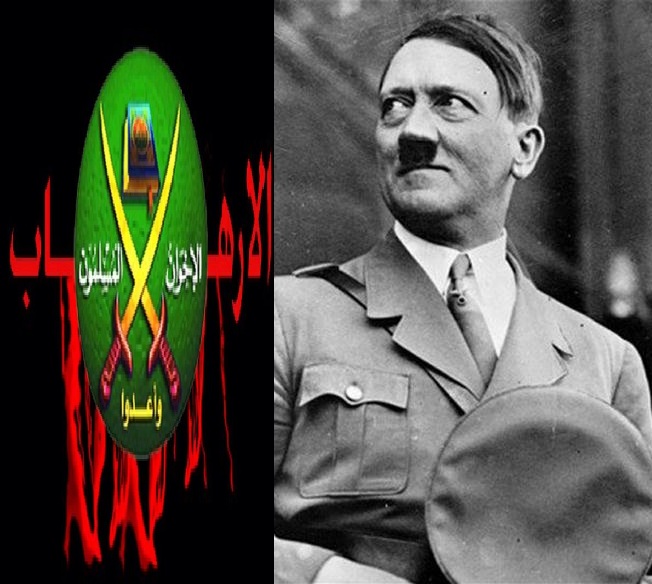






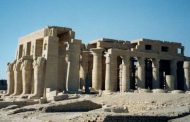



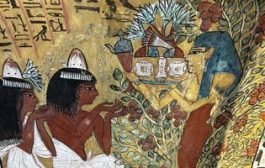


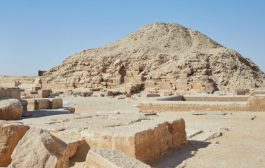













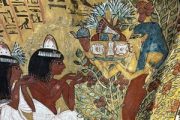


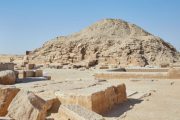
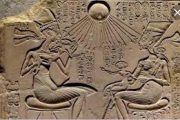



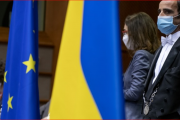

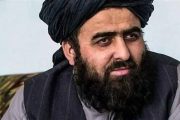

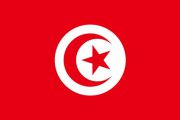


admin in: How the Muslim Brotherhood betrayed Saudi Arabia?
Great article with insight ...
https://www.viagrapascherfr.com/achat-sildenafil-pfizer-tarif/ in: Cross-region cooperation between anti-terrorism agencies needed
Hello there, just became aware of your blog through Google, and found ...